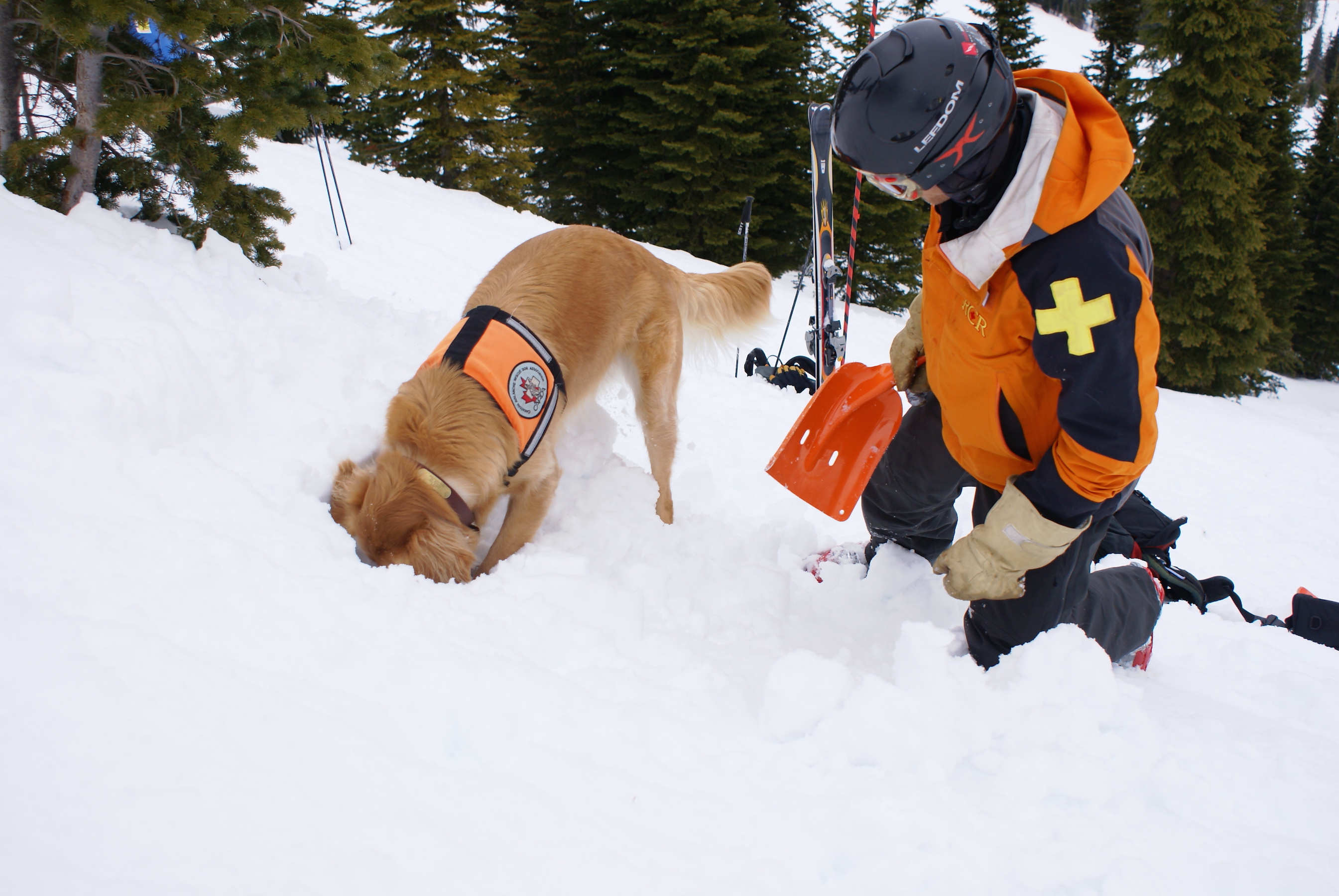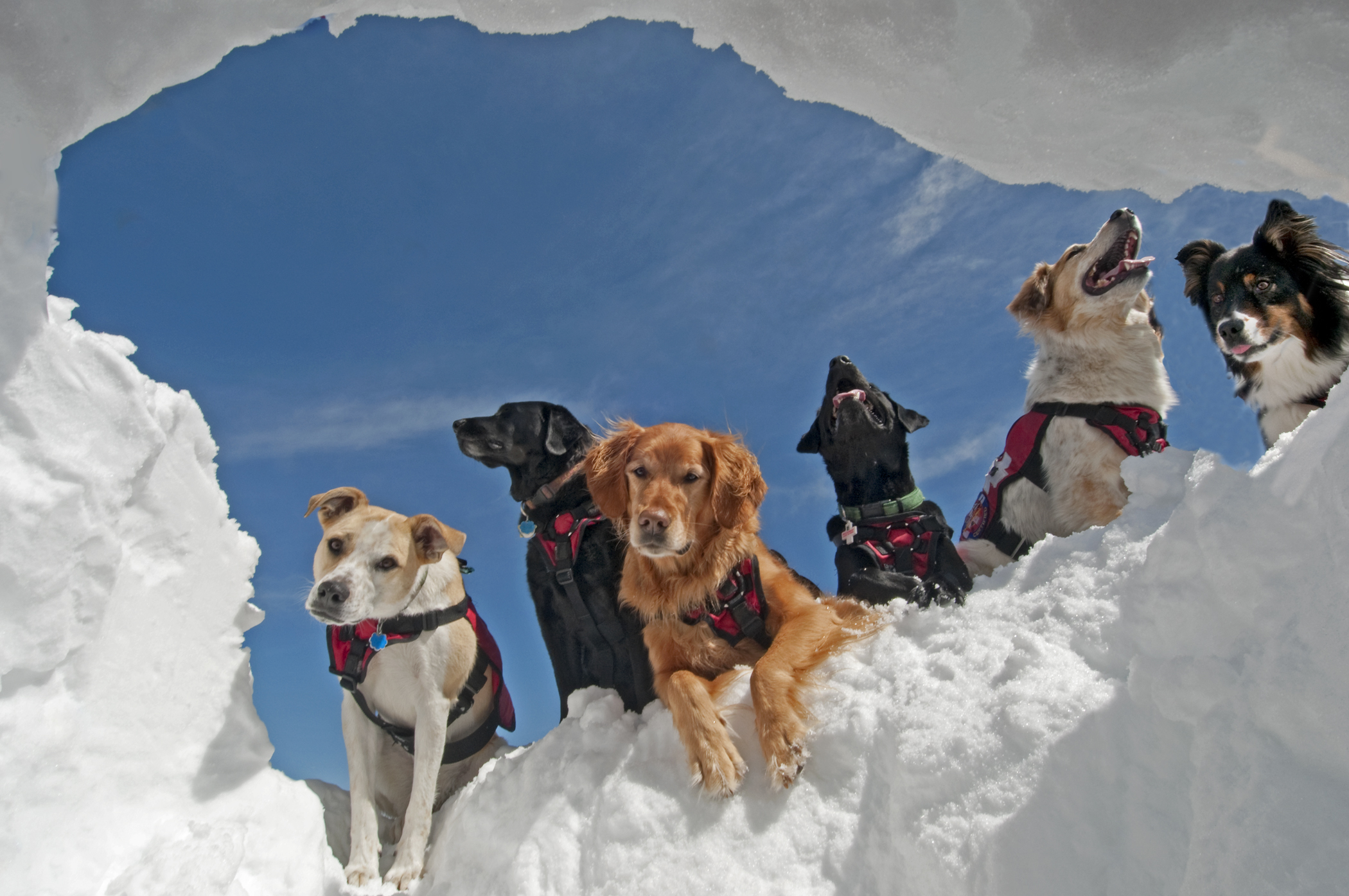Words by Alf Alderson
I’m buried beneath a metre of snow, with a few chinks of sunlight slicing through gaps to the outside world. But I’m not hurt, in fact, I’m not even worried, because I know an avalanche rescue dog is on the way to find me, and these are the go-to guys in this situation.
‘This situation’ is actually an exercise with the Breckenridge Ski Patrol, so apart from getting a little chilly there really is nothing to get anxious about, for within a minute an enthusiastic canine member of the ski patrol team known as ‘Ayup’ starts snuffling and digging above me.
“Were this a real life avalanche I could hardly be more fortunate than to have a dog nearby.”
Within seconds she’s burst through the snow and sits there panting and wagging her tail proudly, while her owner and handler Andy Lapkass showers her with praise and pats.
Were this a real life avalanche I could hardly be more fortunate than to have a dog nearby. As in a real rescue situation an avalanche dog can search one hectare of rough, snowbound terrain and/or avalanche debris in around 30 minutes. Where as it would take twenty humans with avalanche probes around four hours to cover an equivalent area.








